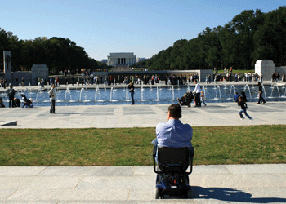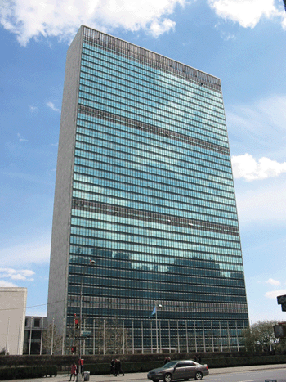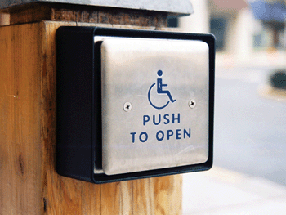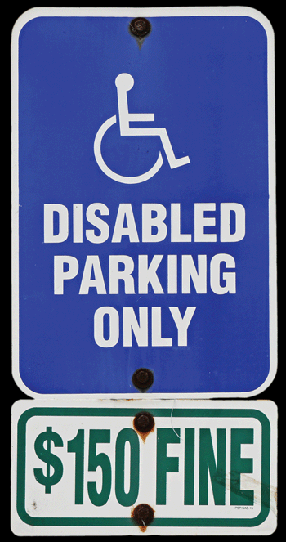In the fall of 2001, the General Assembly of the United
Nations decided to establish a commission in charge of studying proposals
for a convention on the protection and the promotion of the rights and the
dignity of persons with disabilities. The commission has worked with
commitment, meeting twice a year until 2006 when an outline of the
definite draft was reached and was later approved by the General Assembly
on December 13.
On March 30, 2007, a ceremony took place at the Glass
Palace for the signature of the Convention in the presence of about 50
delegations of State Members and represented organizations of persons with
disabilities from all over the world. This is how was concluded a long and
complex negociation process, like every convention adopted by the United
Nations, but which was a source of plenty of preoccupations to the
representatives of persons with disabilities involved in the negociations.
As a matter of fact, it was not easy to come up with a text that would
satisfy all parties, first the movement of persons with disabilities had
to find a shared position internally and common ground with the
delegations of the commission's State Members. The original document was
discussed in depth and rewritten until it was considered acceptable by all
parties involved.
It can with no doubt be asserted that the Convention,
once it comes into force for the majority of the UN's State Members, will
represent the context within which will be addressed whatever policy and
social action concerning persons with disabilities, independently of the
country or the social and cultural context in which they live.
Each
country, signing this Convention, commits itself to recognize the rights
of persons with disabilities, ratified by the Convention, even with a few
possible exceptions, by providing amendments to its own legislation when
it is not in harmony with the standards of the Convention. This is the
beginning of progressiveness allowing some countries, most of all in
development, to gradually act upon the various parts of the Convention.
The States can also derogate from the application of some parts of the
Convention, if they consider that certain provisions are incompatible with
their own legislation. Therefore, a few years will have to go by before
every signatory country adopts the Convention in whole or in part.

Here intercedes the
role of representing organizations that have the duty to ensure that the
Convention be adopted as integrally as possible.
After the assent of
the Convention begins another delicate phase, its actual application. In
order to better protect persons with disabilities where they would not be
adequately protected by their own country, it would have been necessary to
anticipate the possibility to resort to a higher instance, but the
Convention does not hold this.


An optional
Protocol, annexed to the Convention, which rules on the modality of the
recourse. Beyond the numerous national delegations, the European Community
also wanted to sign the Convention and this is particulary significant
since, in this manner, it becomes a State part of the Convention with all
the obligations that rise from it. The signature of the Convention can
without doubt be defined as a historical event since, for the first time,
an Agreement of the United Nations concerns the protection of the rights
of persons with disabilities. Another highly significant development from
the institutional point of view is the signature of the Convention by a
transnational entity that is the European Union which is comprised of 27
member countries. Persons with disabilities will this way be the first
European citizens whose human rights will be safeguarded in the legal
context of the Community.
As mentioned earlier, a State that undersigns
the Convention commits itself to support the ratification procedure which
will take place in each State according to the standards in force. It is
essential that represented organizations attentively follow the conduct of
each government so that everything be done with efficiency and
steadfastness. The right outcome of the Convention was also determined
from the fact that represented organizations played a role of protagonists
during the whole negociation phase and that official delegations
collaborated with important availability.
The Convention on the rights
of persons with disabilities can be subdivided in four main sections. The
first is a true preamble, not binding, but fundamental because it provides
the framework of the Convention in the context of the other UN Agreements
and illustrates its basic philosophy.

The second section contains a series of articles of a
general character (1-8). The third one contains articles from 9 to 33
which define the specific rights of persons with disabilities: access to
the physical environment, to transportation, to information and
communications technologies and systems, and to other facilities
and services open or provided to the public; access to justice; personal
mobility; freedom of expression and opinion; the right to education, to
work and employment. The fourth section contains articles (33-50) which
regulate the implementation and monitoring of the Convention.
Finally,
the optional Protocol, which is not an integral part of the Convention,
binds the states that undersign it to recognize the prerogative of the
instituted Commission of the United Nations for the Rights of Persons with
Disabilities to receive communications by people or groups of people
subject to their jurisdiction who say they are victims of a violation of
their own rights by the States themselves.
For the 650 million persons
with disabilities in the world, new horizons of hope are opening, but the
real challenge begins now. The signatory States, including the European
Community, have committed themselves not to have the Convention left on a
shelf, but to make it an efficient instrument of freedom and integration
of persons with disabilities in their respective societies. Unfortunately,
there have been some wrong notes: some States do not intend to sign the
Convention's optional Protocol, denying their disabled citizens the
possibility to present individual or collective claims in cases where the
Convention is not respected. It is to be hoped for that such position be
re-examined in the future.
The European Disability Forum has launched an intensive awareness campaign and wants to collect a million signatures in all State Members to have the European Union adopt a specific directive on disability in line with the new international Convention. As a matter of fact, such a directive is the only way to ensure that the legislation on disability be a norm in all State Members and that discrimination of persons with disabilities be finally over.